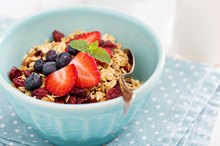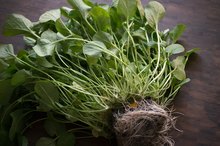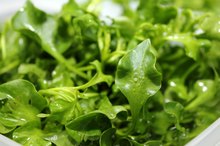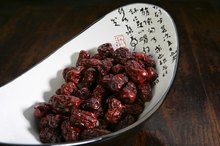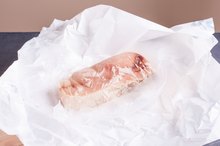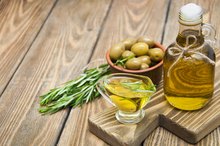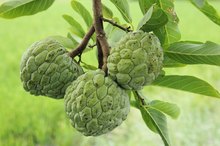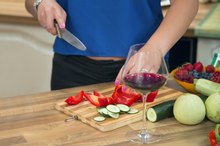Things That Can Be Dehydrated in a Dehydrator
The dehydrator was first introduced in 1795 in France as an appliance for drying fruits and vegetables. What manufacturers specify as the use of a dehydrator has come a long way since then. While fruits and vegetables are definitely viable candidates for dehydrating, your dehydrator can dry a variety of other foods and even some non-food items as well.
Fruits and Vegetables
Pick fruits and vegetables when ripe and dehydrate at their freshest for the best taste and to retain the most nutrients. While fresh is usually best, fruits and vegetables that are unsuitable for canning such as overripe fruits or bruised fruits or vegetables are also acceptable for dehydrating. Drying the fruits and vegetables at a temperature between 130 and 140 degrees Fahrenheit keeps the food at a low enough temperature to reduce the loss of heat-sensitive vitamins A and C. Vegetables and fruits are sufficiently dried when they are crisp and have no pockets of moisture.
Meat and Fish
How Does a Food Dehydrator Work?
Learn More
When dehydrating meat for jerky select leaner cuts of meat such as round or flank steak since fat goes rancid quicker. Dry tender cooked meat to reconstitute later and use in stews or pasta dishes. Dried beef spoils in about three weeks when stored at room temperature; keep it in the refrigerator or freezer for storage times of up to six months. Dry lean fish for jerky; the quality of rehydrated fish is not appetizing and thus not recommended. Dry meats and fish on the dehydrator's highest temperature setting. Since meat and fish do not contain heat-sensitive vitamins, dehydrating does not affect their nutritional value as drastically as it does when drying fruits and vegetables. The higher dehydrating temperatures also help to kill the bacteria and harmful microorganisms that sometimes contaminates meat and fish. Dried fish and meat is tough, but do not dry it to the point that it becomes brittle.
- When dehydrating meat for jerky select leaner cuts of meat such as round or flank steak since fat goes rancid quicker.
- Dried fish and meat is tough, but do not dry it to the point that it becomes brittle.
Flowers and Plants
Dry flowers, herbs and other plants for food use or to use in potpourri or in crafts, including floral arrangements, corsages or as party favors. Harvest herbs and plants while they are fresh and before they start to open. The aromatic oils in plants are heat sensitive so keep the heat down to temperatures between 90 and 100 degrees Fahrenheit when dehydrating them. Plants dry quickly within about one to two hours. When drying flowers with petals or leaves, using a desiccant in the dehydrator preserves the color and structure of the flower better since it absorbs moisture quickly and shortens the drying process.
- Dry flowers, herbs and other plants for food use or to use in potpourri or in crafts, including floral arrangements, corsages or as party favors.
- The aromatic oils in plants are heat sensitive so keep the heat down to temperatures between 90 and 100 degrees Fahrenheit when dehydrating them.
Other Suggestions
How to Keep and Store Watercress
Learn More
Puree fruit and pour it onto a fruit roll tray -- sometimes provided with a dehydrator -- to make fruit leather. Dehydrate tomato sauce and blend it into a powder; add water to the powder to reconstitute it back into tomato sauce; use less water to make it into tomato paste or more water to make it into tomato soup or juice. Dehydrate shaped dough to make ornaments or other crafts; cool the dough before painting and dehydrate the dough again after painting to dry the paint.
Related Articles
References
Writer Bio
Sommer Leigh has produced home, garden, family and health content since 1997 for such nationally known publications as "Better Homes and Gardens," "Ladies' Home Journal," "Midwest Living," "Healthy Kids" and "American Baby." Leigh also owns a Web-consulting business and writes for several Internet publications. She has a Bachelor of Science in information technology and Web management from the University of Phoenix.
